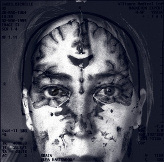Tom Stafford's Blog, page 37
March 29, 2014
The genes are to blame game
 The media love ‘your genes are to blame’ stories despite the fact that genetics is, in most cases, just one, often small, influence on a behaviour or trait.
The media love ‘your genes are to blame’ stories despite the fact that genetics is, in most cases, just one, often small, influence on a behaviour or trait.
Here’s a few lowlights:
Glass always half-empty? Your genes may be to blame
Lazy? Your Genes May Be to Blame
Have math anxiety? Your genes may be to blame
Couch potato? Your GENES could be to blame
Are You Forgetful? Your Genes Might Be To Blame
Are your genes to blame for not being rich?
Can’t do well in exams? Your genes are mostly to blame
Are Genetics to Blame for Poor Driving?
Genes to blame for boozy night
Spoiler: your genes are not to blame.
Firstly, it’s interesting that these stories are almost always framed around difficulties or negative characteristics. Rarely do you read stories along the lines of ‘Good looking? Compassionate? Healthy? Your genes may be to blame’.
In other words, they rely on people’s interest in discounting negative characteristics about themselves to attract readers / advertising targets at the expense of biasing the sorts of scientific results that get media attention.
So here would be a a more accurate if not slightly less catchy version of all these headlines: ‘Have this specific trait or behaviour? Your genes may typically contribute a small to moderate amount to the difference between people if you are similar to the population used in the study to estimate this effect – bearing in mind the caveats about the need to independently replicate the results to be confident in the reliability of the conclusions’
Yes, it doesn’t have quite the same impact as the ‘blame your genes’ headlines but you can still illustrate it with a stock photo of a blonde girl with an exaggerated expression of frustration on her face. Not all bad news, is it editors?
It’s worth saying that these sorts of stories are almost always about traits or behaviours where genetics contributes only a partial amount to the overall outcome but this is not a feature of genetics per se, it depends on what you’re looking at.
On one end of the spectrum are highly penetrant single gene disorders like Huntingdon’s disease where if you have the gene you’ll get the disorder. On the other end are much of human behaviours and traits where there are likely many genes that contribute a varying amount indirectly to the overall difference depending on the population being studied.
No-one has yet done a study on genetic contributions to differences in the likelihood of writing ‘your genes are to blame’ stories – probably due to a fear of opening a recursive media loop from which we may never emerge.


March 23, 2014
A balanced look at brain scanning
 Bioethics think tank The Hastings Center have published an excellent open-access report on ‘Interpreting Neuroimages: The Technology and its Limits’ that takes a critical but balanced look at the use of brain scans for understanding the mind.
Bioethics think tank The Hastings Center have published an excellent open-access report on ‘Interpreting Neuroimages: The Technology and its Limits’ that takes a critical but balanced look at the use of brain scans for understanding the mind.
They’ve commissioned leading cognitive neuroscientists to write chapters including Geoffrey Aguirre, Martha Farah and Helen Mayberg, as well as having a chapter by some legal folks who discuss whether neuroimaging can teach us anything about moral and legal responsibility.
The chapter by the brilliant Martha Farah is particularly good and takes a level-headed look at the critiques of fMRI and is essential reading if you want to get up to speed on what brain scans are likely to tell us about the mind and brain.
The report is all in academic writing but if you’re a dedicated neuroscience fan, it probably won’t pose too much of a problem.
Link to ‘Interpreting Neuroimages: The Technology and its Limits’.


March 22, 2014
Spike activity 21-03-2014
Quick links from the past week in mind and brain news:

The thrill of cutting into a human brain says The Spectator, who have clearly never tried to operate on themselves after reading a HOWTO on the internet.
The Loom has collected some brain visualisation fly-throughs and give the low-down and what they’re about.
It turns out the Daily Mail is obsessed with brain tumours – to quite a weird extent.
Time magazine reports that after having pharmaceutical companies refuse to provide drugs for lethal injection, Texas announces it has found a new supply of execution drugs but won’t say from where.
fMRI – through the medium of song. Neurocritic finds a musical number on brain imaging.
Science News has an interesting interview on the science of unconsciousness.
Does the brain speak the truth of the self? Somatosphere with a wordy but rewarding essay.
Nature reports that the US BRAIN initiative and European Human Brain Project are to join forces. Rebel neuroscientists, striking from a hidden base…


March 19, 2014
A modern psychiatry
 If you want to know how your average reasonable mainstream medical psychiatrist thinks about mental illness, Aeon magazine has a good piece that captures where many are coming from.
If you want to know how your average reasonable mainstream medical psychiatrist thinks about mental illness, Aeon magazine has a good piece that captures where many are coming from.
Now before you (yes you) Dr average reasonable mainstream medical psychiatrist, says that you don’t agree with all of it, I’m not suggesting it’s a manifesto, but it does cover a great deal of the mainstream.
We could argue a few points over some of the empirical claims, but it’s a surprisingly good snapshot in the round.
Probably the most important thing it underlines is that most psychiatrists are less obsessed with diagnosis than people who are are obsessed about the fact that psychiatrists make diagnoses.
Most psychiatrists typically don’t think that ‘every diagnosis is a disease’ and recognise the fuzziness of the boundaries – as indeed, do most medical professionals.
The article also highlights the fact that the medicalisation of emotional distress is driven as much by public demand as it is by drug company profiteering. People like pill-shaped convenience and drug companies make it their business to take advantage of this.
I would also say that the piece reflects mainstream psychiatric thinking by what it leaves out: a sufficient discussion of the psychiatric deprivation of liberty and autonomy – and its emotional impact on individuals.
Considering that this is the thing most likely to be experienced as traumatic, it is still greatly under-emphasised in internal debates and it remains conspicuous by its absence.
Link to ‘A Mad World’ on Aeon magazine.


March 18, 2014
Frozen nightmares
The Devil in the Room is a fantastic short film about the experience of hallucinatory sleep paralysis – a common experience that has been widely mythologised around the world.
Sleep paralysis is the experience of being unable to move during the process of waking – when you have regained consciousness but you’re brain has not re-engaged your ability to control your muscles.
The reason the experience has been widely associated with mythological creatures is because in some people it can lead to intense emotions and hallucinations.
The name ‘sleep paralysis’ is a bit confusing because this also refers to normal sleep paralysis – where your brain disengages control of your muscles during REM sleep to stop you ‘acting out’ your dreams.
The film is part of the Sleep Paralysis Project, which has much more about the experience on their website.
Link to ‘Devil in the Room’ on vimeo.


March 16, 2014
Spray can happy pills
How to win wars by influencing people
 I’ve got an article in The Observer about how behavioural science is being put at the centre of military operations and how an ‘influence-led’ view of warfare is causing a rethink in how armed conflict is managed.
I’ve got an article in The Observer about how behavioural science is being put at the centre of military operations and how an ‘influence-led’ view of warfare is causing a rethink in how armed conflict is managed.
Techniques such as deception and propaganda have been the mainstay of warfare for thousands of years, but there is a growing belief that the modern world has changed so fundamentally that war itself needs to be refigured. Confrontations between standing armies of large nation states are becoming rare while conflicts with guerrilla or terrorist groups, barely distinguishable from the local population, are increasingly common. In other words, overwhelming firepower no longer guarantees victory…
Mackay and Tatham argue that researching what motivates people within specific groups and deploying informed, testable interventions on the ground will be central to managing modern conflict.
It also discusses how ‘information operations’ thinking has spread into the military’s work in the civilian realm.
Link to ‘How to win wars by influencing people’s behaviour’.


March 15, 2014
Spike activity 14-03-2014
Quick links from the past week in mind and brain news:

The Conversation has an excellent piece on how the study of brain injury, not brain scans, have told us the most about how the brain works.
How light affects the brain. Only Human discusses a fascinating study on how a recently discovered form of human light receptor affects cognitive function.
Retraction Watch covers how the researcher behind discredited findings on the link between chronic fatigue and the XMRV virus has written a book, and has rewritten history in the process. Negative findings you say? Pifflebuymybook.
The New York Times has an excellent retrospective report about the trial that unleashed hysteria over child abuse and a thousand false memories.
Is religion good for your brain? asks Discovery News before writing an article that seems to have been thought-through while huffing butane.
Science News take a critical look at studies on the link between good looks and enhanced abilities. Sadly, still no studies on the link between irresistible allure and an in-depth knowledge of early 90s PC operating systems. Cognitive scientists, you know where to find me.
Aeon magazine has an interesting piece on the relentless pre-march of humanoid robots into society.
Modern life damaging infant brains, according to some evidence-free hand-wringers contacted by BBC News. Quotes the “Institute for Neuro-Physiological Psychology”. Pro-tip for faux neurocampaigners: choose a name which doesn’t immediately announce I KNOW NOTHING ABOUT THE BRAIN.
New Scientist report on early research suggesting D-cycloserine might enhance psychotherapy for anxiety disorders.


March 13, 2014
Loving you is easy because you’re beautiful
Neuroscape Lab, we salute your next generation of brain visualisation, that looks like something out of a sci-fi film where the director is a bit obsessed with correctly representing the anatomy of the brain.
They describe the visualisation like this:
This is an anatomically-realistic 3D brain visualization depicting real-time source-localized activity (power and “effective” connectivity) from EEG (electroencephalographic) signals. Each color represents source power and connectivity in a different frequency band (theta, alpha, beta, gamma) and the golden lines are white matter anatomical fiber tracts. Estimated information transfer between brain regions is visualized as pulses of light flowing along the fiber tracts connecting the regions.
But honestly, who cares? It’s a glowing rotating brain with golden streaks of light flowing through it.
In fact, after 25 years, science has finally scanned the brain from The Orb’s ambient techno classic ‘A Huge Ever Growing Pulsating Brain That Rules from the Centre of the Ultraworld’.
It’s as if the rave generation stumbled out of life’s warehouse at 7am and ended up being neuroscientists.
Link to Neuroscape Lab’s awesome brain visualisation.
Link to the original Orb track (or the classic Orbital remix)


March 11, 2014
From under-hearing to ultra-hearing
 The BBC World Service has a fascinating radio programme on hearing loss and how it’s spurring the move towards auditory enhancement technology for everybody.
The BBC World Service has a fascinating radio programme on hearing loss and how it’s spurring the move towards auditory enhancement technology for everybody.
The documentary, called Hack My Hearing, was created by science writer Frank Swain who is suffering hearing loss. He explores different forms of hearing disturbance and looks at technologies that aim to enhance hearing and how they soon might provide ‘super human’ auditory abilities.
One of the best things about the documentary is that it has been brilliantly engineered so you can experience what most of the forms of hearing loss and hearing enhancement in the documentary sound like.
It is definitely one to be listened to on headphones and it sounds wonderful.
Sadly, it’s only available as streamed audio at the moment, but you can listen to the full programme at the link below.
Link to Hack My Hearing streamed audio.


Tom Stafford's Blog
- Tom Stafford's profile
- 13 followers






